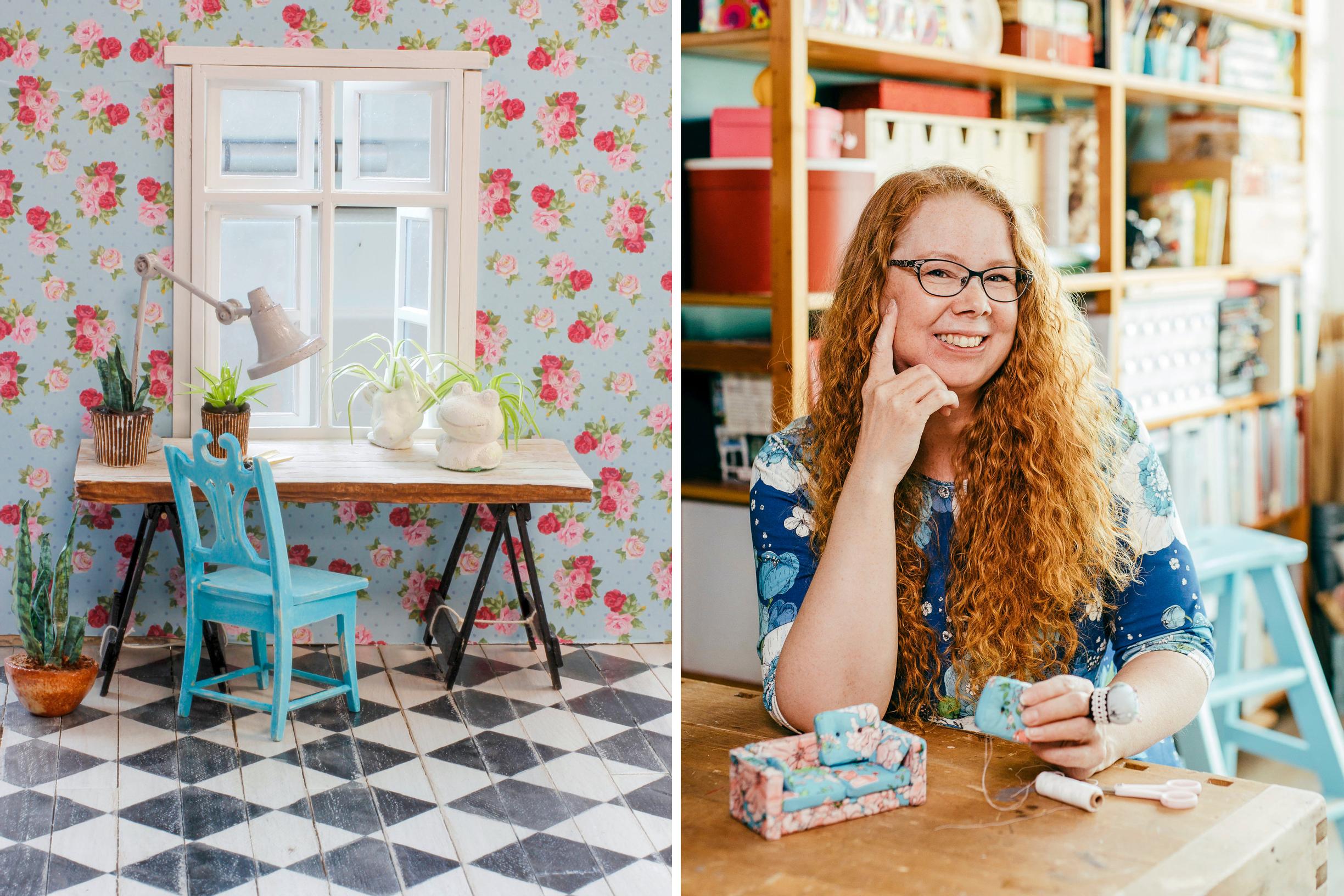
Maria switched from computer engineering to dollhouses: “I make tens of thousands of tiny objects each year”
From a bag fastener to a houseplant, from a sardine can to a bed! For Maria Malmström, the dollhouse hobby led her to quit her day job and become an entrepreneur. The miniature houses, inspired by traditional Finnish homes and their country-style interiors, also intrigue people around the world.
All kinds of scales, especially tiny ones, fascinated Maria Malmström from an early age. There was a dollhouse in her childhood home, built by her parents for her and her sister. While her sister played house with the dollhouse and Barbies, Maria styled the settings in ways she liked. Matchboxes became chests of drawers, and bottle caps turned into pie tins.
Maria, what’s the story behind your most famous dollhouse, Väinölä?
I always paid more attention to details than the bigger picture. I was drawing constantly, whenever I had the chance. I was pretty fussy and a total perfectionist. I guess it all paved the way for who I would become later.
When my spouse Esa was studying to become a carpenter, he recognized my interest and surprised me with a dollhouse. I spent a year decorating it, and soon I needed a bigger one. Väinölä was finished in 2002 as Esa’s artisan project and was named after our son Väinö, who was born the year before.
Väinölä has 18 rooms and six floors, so there was plenty to do. I made all the furniture from wood by hand as much as possible. While I was furnishing Väinölä, we were busy with small children. Esa was a stay-at-home dad, and I worked at Nokia.
Whenever I was tinkering with the dollhouse, one of the kids would be right there with me. The boys played gently, but our daughter was more rough-and-tumble, so I always had repairs on my table. My kids still believe I can fix anything: I recently made a new door for my daughter’s ATV.
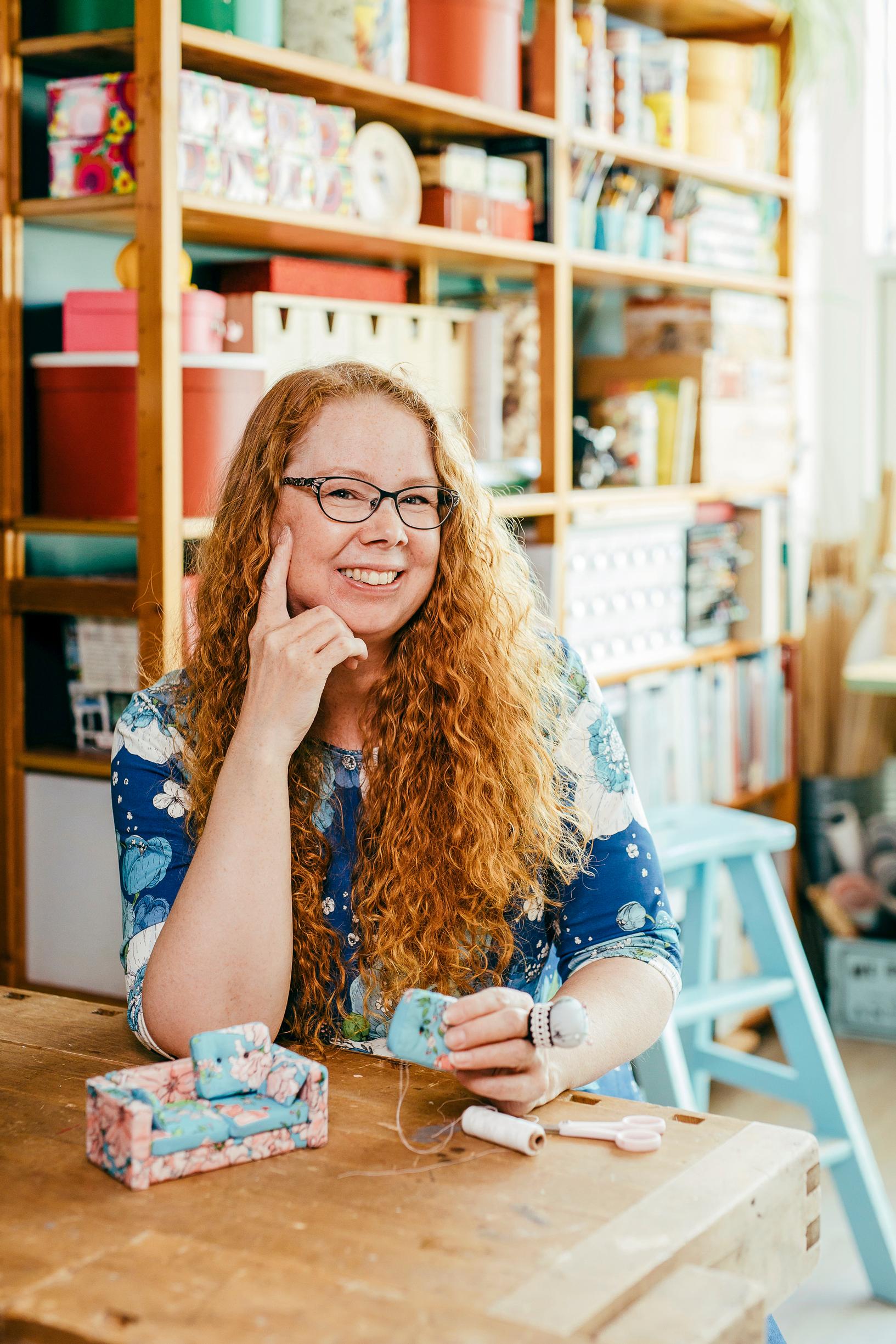
“Väinölä has 18 rooms and six floors, so there was plenty to decorate. I made all the furniture from wood by hand, as thoroughly as possible.”
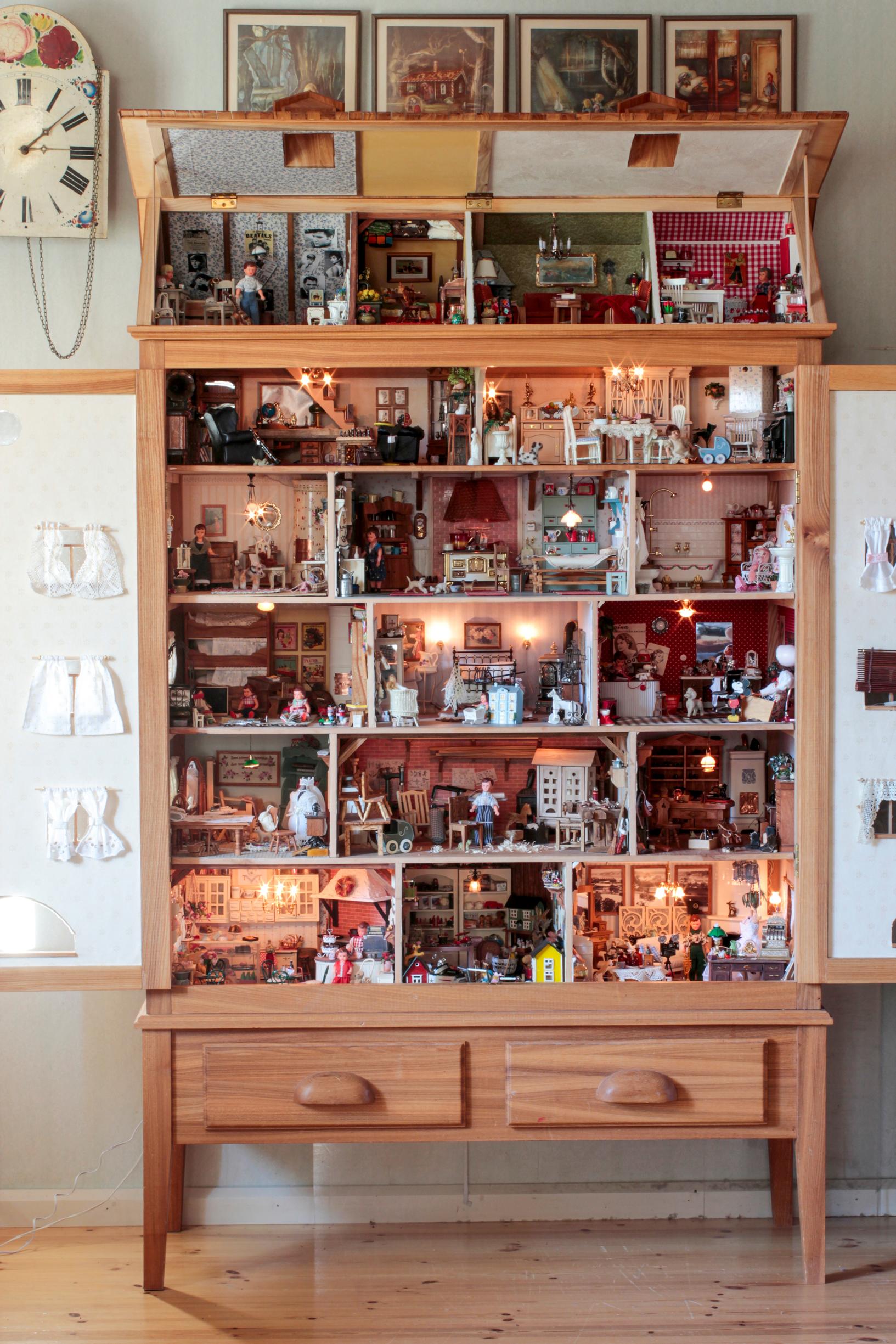
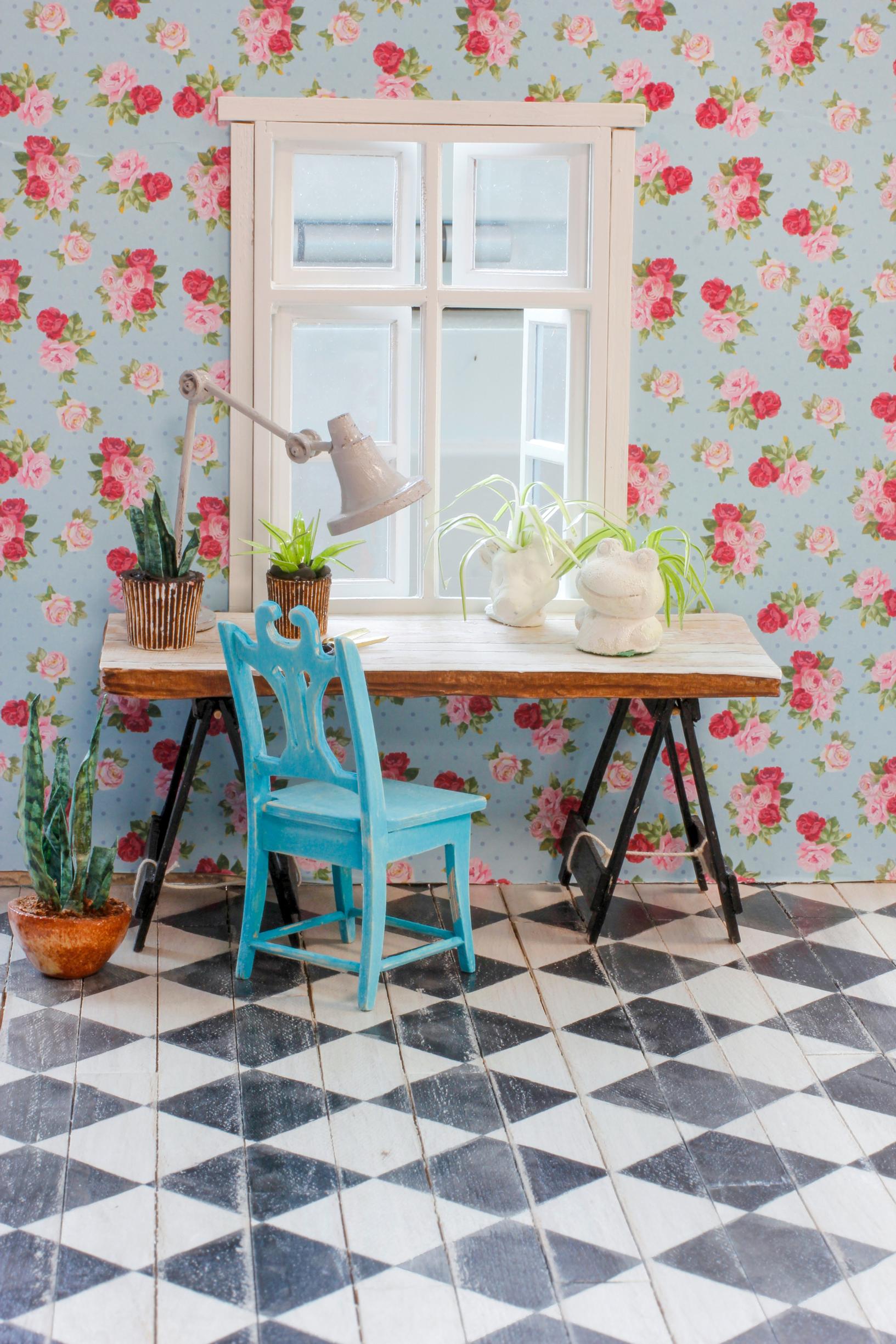
How did a dollhouse become your profession?
In 2012, my first book was published. Nukkekoti Väinölän tapaan made Väinölä into a brand. Now I have seven books, and I already have a plan for the eighth. Gradually, these miniatures turned into my profession. I quit my day job, became a freelancer, and started running courses on decorating dollhouses.
As I neared fifty, I decided it was now or never. In fall 2019, I pondered it and did my research, and at the start of the next year, I launched my online store Nukkekoti Väinölä.
What does your work involve?
During the COVID-19 pandemic, I kept busy by creating a dollhouse Advent calendar, which became a yearly tradition. I start planning it in January, and I make 500 calendars. Each one has 24 windows, so I had to prepare and pack 12,000 items or their parts—quite the task! Last year, I changed it to an Advent calendar with four windows. The number of items stayed the same, but there was far less packing.
My online store has over 900 products, around 90 percent of which I create myself. I’m always coming up with something new. For Easter, I made surprise eggs with dollhouse craft items inside, and for Valentine’s Day and Christmas, I put together themed sets. This spring, I added a greenhouse kit that attaches to the side of a dollhouse.
I make tens of thousands of tiny objects each year and design and produce several house models. I can’t do everything by hand anymore, so machines and technology lend a helping hand. I also make commissioned pieces, and not just dollhouse items.
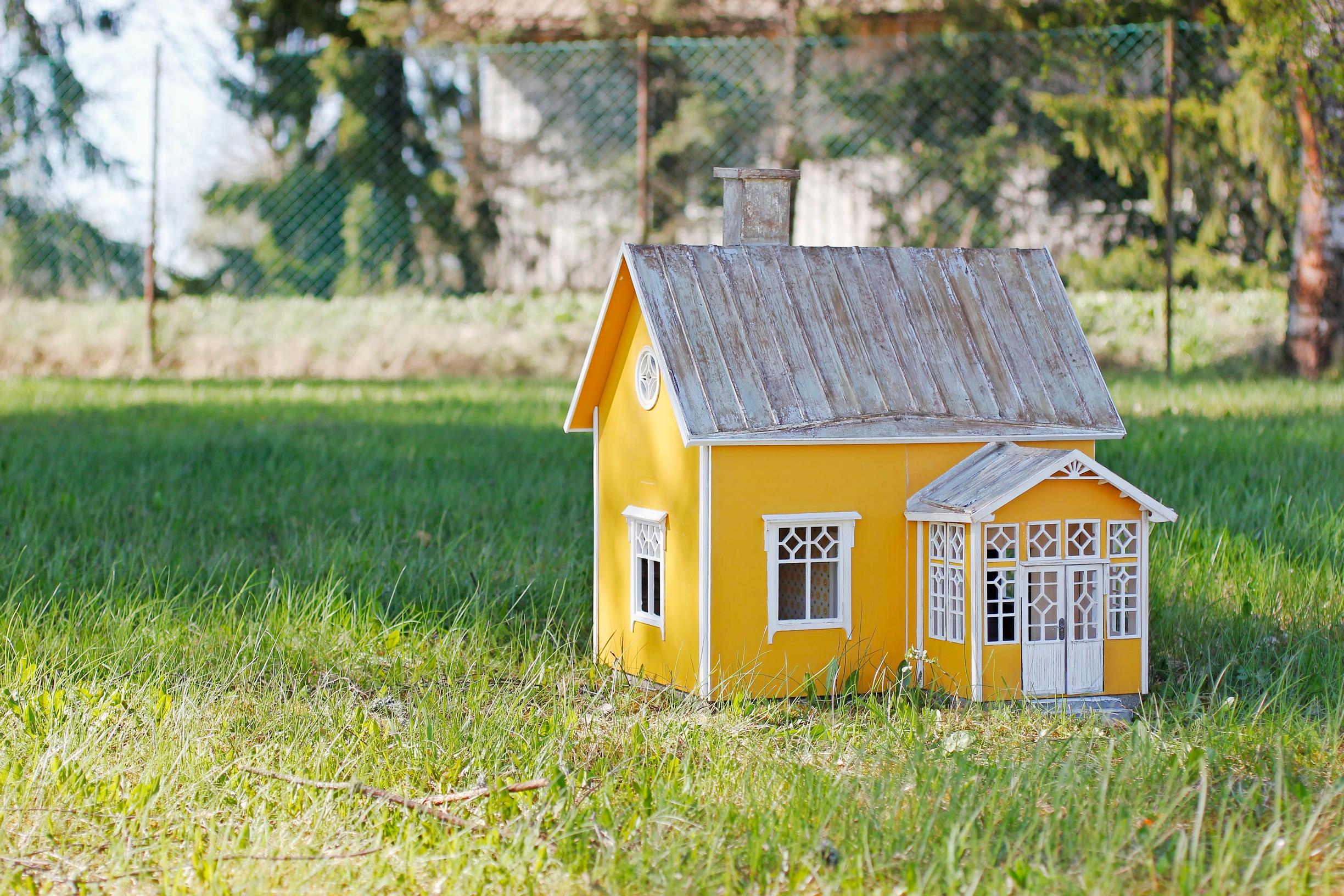
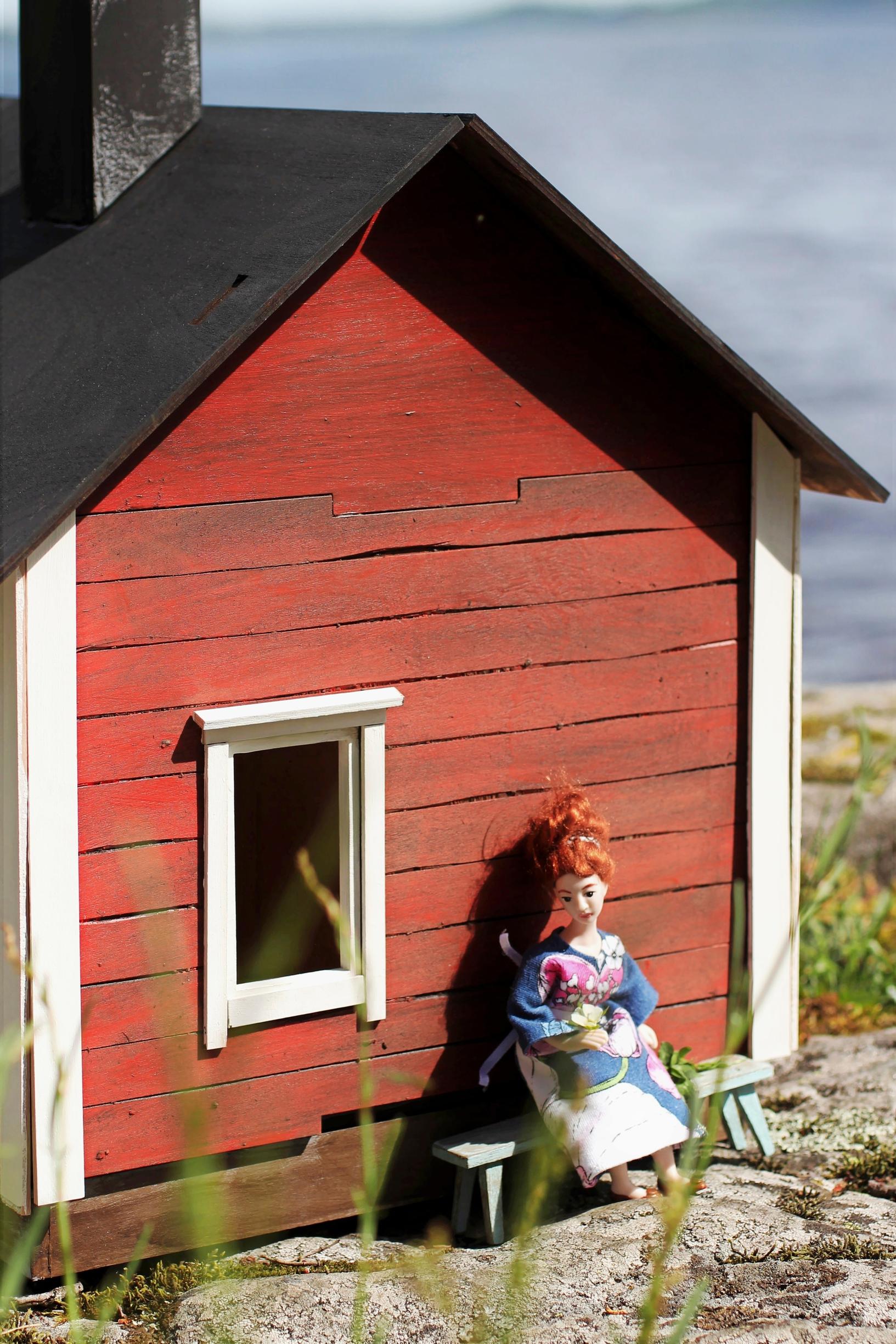
Where do you get your ideas for dollhouses?
My online store features traditional Finnish buildings: a rustic cabin, an old cottage, a post-war era home, a Terijoki-style villa, a sauna, and an outhouse. They’re all named after women in my family. When you close the walls, they look like real miniature houses. My dollhouses are also ordered from abroad, and so are my books—even though they haven’t been translated.
Most of my miniatures are 1:12 scale, the most common. The smallest I make is 1:48. Swedish Lundby houses are 1:18 or 1:16, and I craft furniture for those too. Then there are dollhouse dollhouses, which are 1:144! I’ve noticed all dollhouse enthusiasts are a bit perfectionist. A half-millimeter discrepancy can feel like the end of the world.
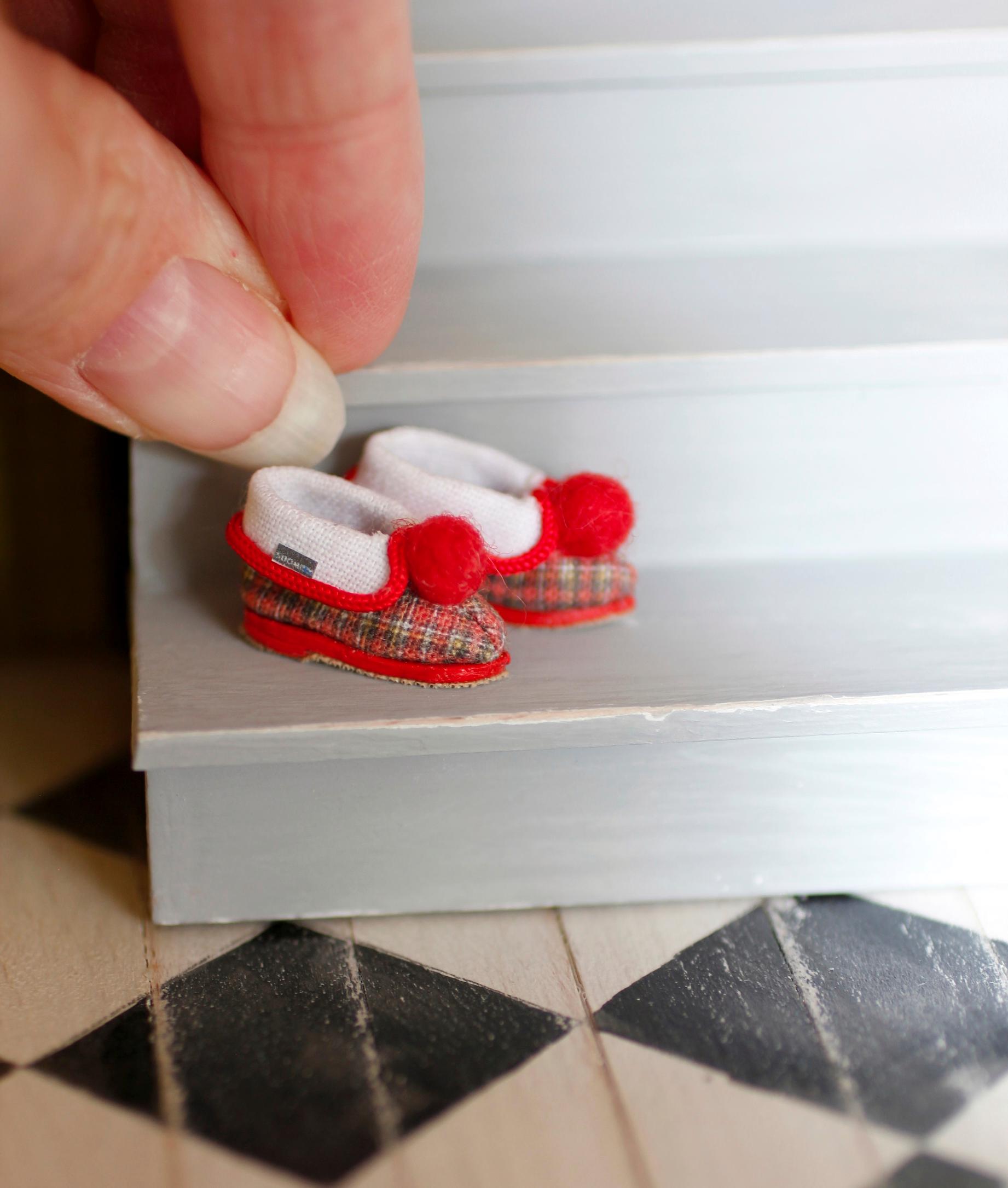
“I’ve noticed that every dollhouse enthusiast is a bit of a perfectionist. A half-millimeter discrepancy almost feels like the end of the world.”
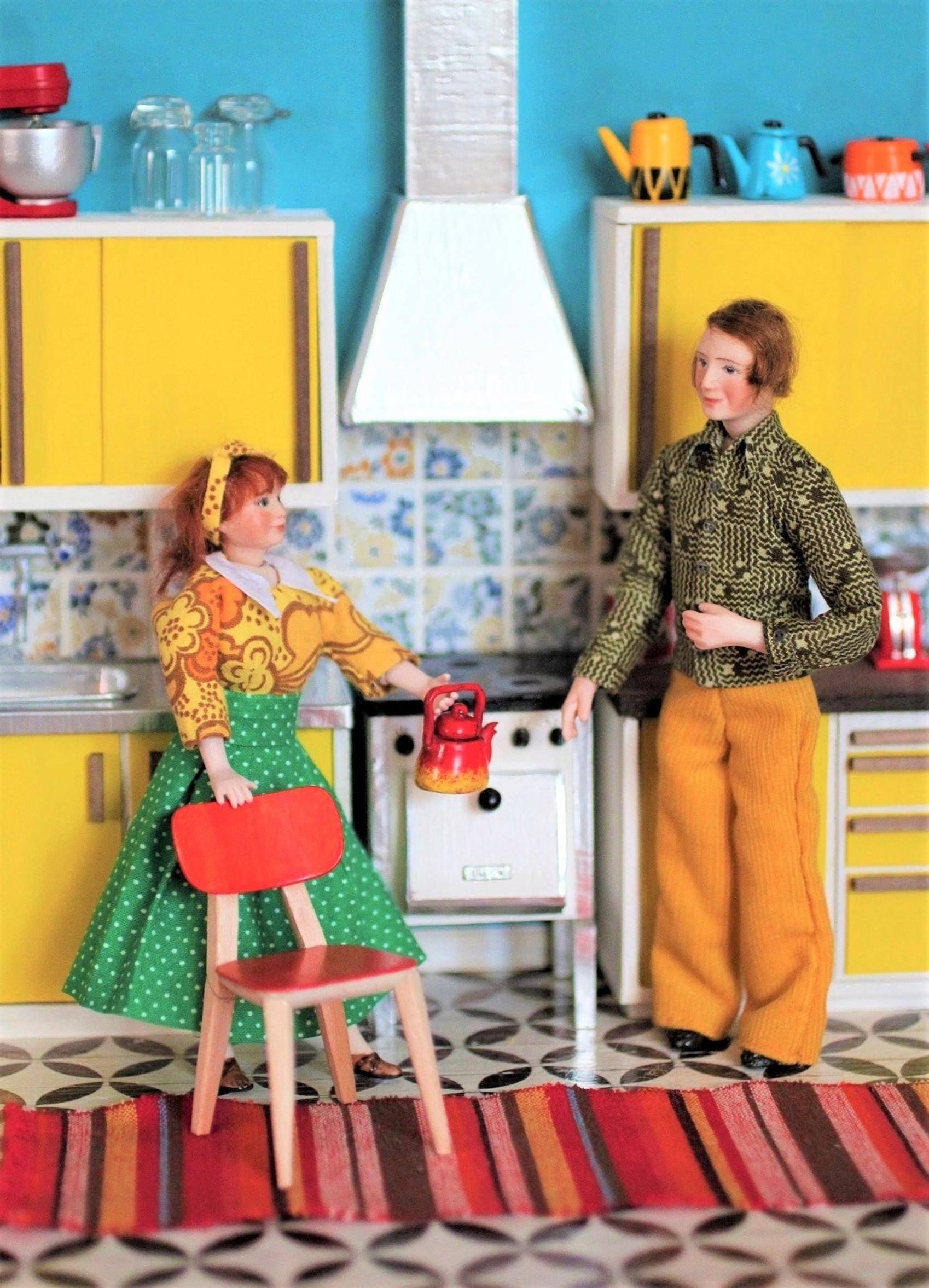
What’s so inspiring about tiny objects?
I’m drawn to the chance to dive back into a childlike world. The magic of a dollhouse lies in small-scale illusions: a thimble might become a flower pot, and a sardine can might become a child’s bed. I want to lose myself in that enchanting atmosphere over and over again.
I’m an artisan through and through. My grandfather was a tailor, and my mother was a seamstress, so we’ve always been a making-things family. I’ve woven cloth, thrown pottery, worked with bark-tanned leather, and of course sewn, crocheted, and embroidered. Our lifestyle taught my kids that you work for money—they never just ask for it; they ask if I have a job for them. My daughter already has a steady summer job at the online store.
Woodworking might be my favorite, and I love the scent of wood. My asthma kept me from becoming a carpenter, but the tools I have now let me fulfill my furniture-maker dreams in miniature.
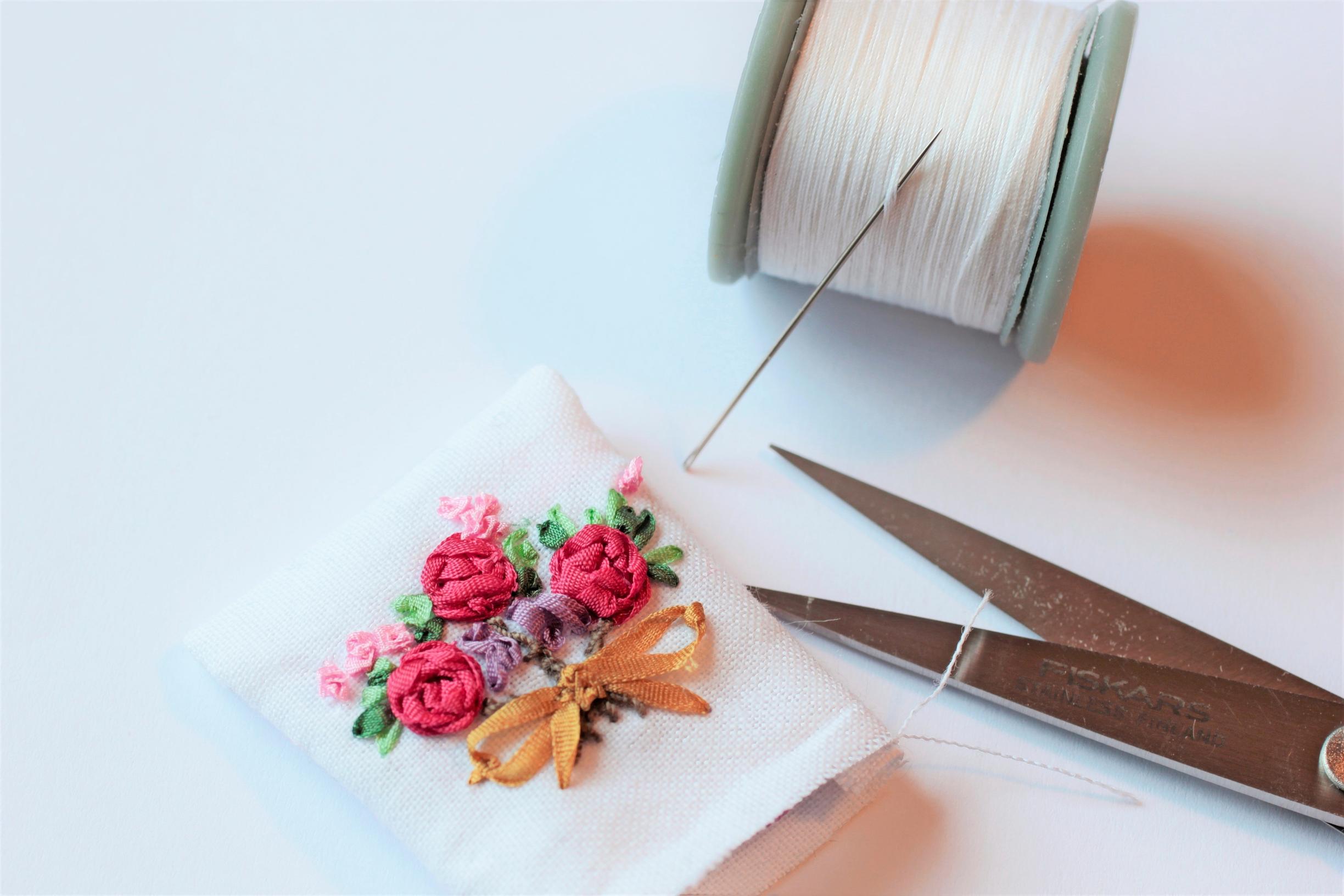
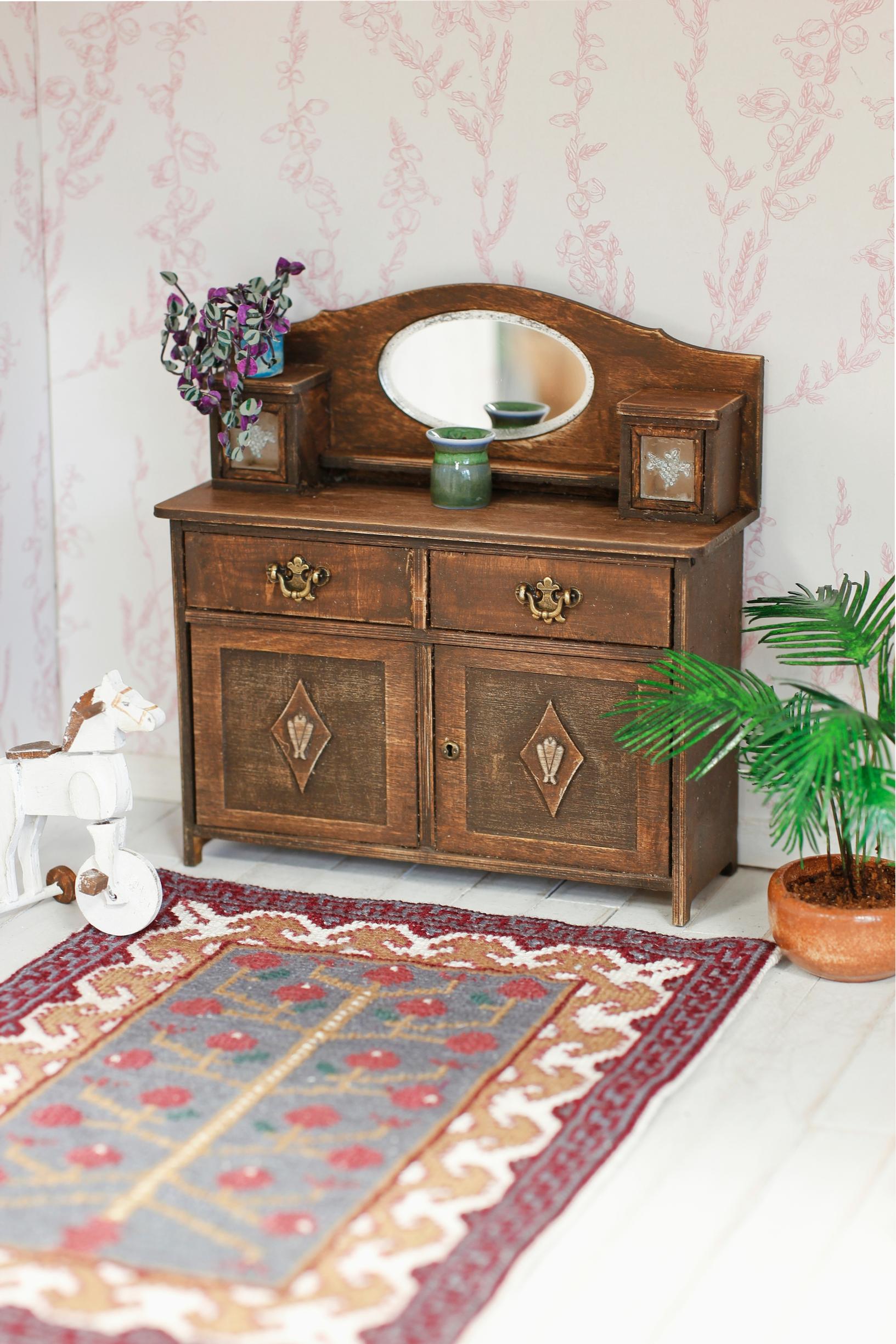
Maria Malmström
Lives: In a post-war era house in Tammela.
Occupation: Artisan and nonfiction author
Education: Artisan carpenter and computer engineer
Life philosophy: “A dollhouse hobby not only builds your crafting skills, it’s also therapeutic. When you focus on detailed, delicate work, the rest of the world’s worries fade away.”
On social media: @nukkekoti_vainola
Maria’s tips for starting a dollhouse hobby
- Start by making small items you can put on a shelf. Instead of tackling an entire dollhouse, you can build a single room or a room box out of a wooden crate or a cardboard box.
- You can often find crafting materials at thrift stores and recycling centers. Even scraps can be used. For instance, you can make a table from popsicle sticks and cardboard.
- Stop by your local library’s dollhouse section, and you’ll soon discover how easily this tiny world draws you in!


